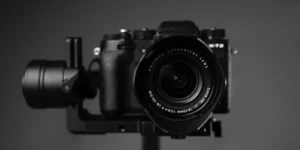5 Phases of Educational Video Production for e-Learning

The eLearning course creation process involves a lot of intricacies. The production process for learning videos is an enduring one.
Plus, with so many skills required at a single time to work on the project, it can be hard for anyone to deliver on expectations. Perhaps, that’s why most learning course creators hire an Educational video production company.
However, you don’t have to fret. In this blog, we’ll give you a walkthrough of the 5 phases of educational video production. All professional learning projects go through these 5 phases of video production.
After reading this blog, you’ll be to choose the right type of learning video distribution for your course.
This blog will help you discover;
- five phases of video production for learning
- Learning video production skills
- model for helping people create learning videos
So, without further ado, let’s dive in!
There are 5 Phases of Video Production for Learning.
Gathering information
The first phase of video production is gathering information. Your job would start with gathering information.
You would need to gather data from your client and also do more research on what subject matter experts have revealed on your topic. You should research your employees’ existing learning plans.
Your job is not just limited to piling up facts. That would be used in the presentation. But, you should be able to see the bigger picture from the lens of a learning strategist.
You won’t just engage with multiple stakeholders, but more importantly, you’ll discuss possible alternatives for presentation. You need to look beyond the traditional phases of video production
Part of your job also involves asking what presentation style would be suitable. Whether you need the presentation to be formal or informal? Or does the client expect you to strike a balance between the two?
On top of that, learning videos focus on visual design. So, your job would progress with forming a creative brief.
It’s a written document that serves as a blueprint for your storyboards. You can even align it with a design document to aid clients who are new to the video game.
Creative brief checklist
Your creative brief must answer the following questions;
- What business problem your video will solve?
- Who is it for?
- What do you want the viewers to do after watching your video?
- What is your budget and deadline?
- What’s the promise of learning video?
Note that these are just a few important questions. So, take this checklist with a pinch of salt. You may adjust it to suit your needs.
Pre-production
The next stage is pre-production. This is super important.
You have to be more careful with this stage of video production as it will directly impact the output of your efforts. Pre-production encompasses everything that you would do before pressing the ‘record’ button.
The pre-production stage has all the activities that would support and transform your creative brief into visual elements. You can start with scriptwriting and then proceed with creating storyboards.
To ace time management, you are better off using a call sheet to set up a production schedule. It will help you to stay ahead of time and produce storyboards and edit them as needed.
Apart from that, you need to be mindful of tone, style, presentation, and the colors you would use in your video.
You don’t want a spokesperson wearing a green shirt and camouflaging with a green screen. It will appear as a floating head. That might just scare the viewers. You don’t want that.
Production
Production encompasses everything that results in the creation of physical assets of your project. For learning purposes, you have the option of using live-action, recorded videos, or even animated ones.
If you want live-action recording your production would involve using the built-in microphone of your camera. Or you also have the option of recording audio or using voiceover. You will have audio-only files in the format MP3, WAV, and AIFF.
In addition to this, you need to have the right crew for your video production process. As a learning strategist, you’ll coordinate with your animators, and illustrators to power up your video experience with heartwarming animations.
With a finalized script for your learning course, you want to bring up your team together and start with the production process.
Post-production
Production involves creating physical assets. If you think your job is done, you’re wrong. Your work has just begun. This is where you need to sit down with your editor and organize all elements that you’ve made for the video.
These could be graphics, images, animations, audio, and much more. The editor’s job is critical here. So, make sure you have a quality editor working on it.
They will organize these elements in a sequence to transform them into a full-blown video. Like most top-rated animation companies, your goal with the editing part should be to ensure that everything organized in a video makes sense logically.
Curtail your messaging to the needs and wants of your learning audience. Make sure your video satisfies the checklist for learning objectives.
Next, the editor’s job is to add text, audio, and transitions to the video.
It won’t just add to the presentation quality, but would also do a load of good for dispersing knowledge. On top of that, it will help your learners in building skills, and respond to the content in a thriving fashion.
Important here is to make sure that your final presentation is as per the plan you designed in the pre-production stage. You should have a keen eye for evaluating the quality of the learning video.
After a quick revision (that may involve a few tweaks with voiceover and text and transitions), you’re good to go.
Distribution
Now that you’ve completed your training video, it’s time to get it out in front of your learning audience. This phase is probably the most critical. It can mean the difference between course success and failure. It is known as distribution.
And, when you make videos for learning purposes, a distribution plan is vital.
Distribution works indirectly and directly. Direct distribution involves posting your learning videos on platforms like YouTube and Vimeo. This might be suitable if your job is marketing your course.
You might be able to attract likes and views, but these are vanity metrics. Evaluating learning videos is critical. Vanity metrics only tell half of the story. These are not really useful to measure the success of your learning video.
Creators of learning video content say that vanity metrics such as likes and shares only tell half of the story. These are not really useful to measure the success of your learning video.
For one, you can’t track learn objectives of your students. Two, you won’t know if they completed the course. This approach might not be suitable if your strategy is dedicated to course creation and fostering learning.
The right distribution method
The direct distribution also involves sharing your course on an e-learning platform such as a learning management system (LMS). This is perfect for learning needs. Companies wanting to train their employees can consider this option.
As all they need to do is post the course videos on LMS and link them to employees’ learning plans. That’s the right distribution method.
Final thoughts
Let’s wrap this one up. Above we discussed the 5 phases of learning video production. You can start with the pre-production process during which you’ll prepare the creative brief. It’s a skeleton of your idea for the video.
Next, your job as a learning strategist is to transform the brief into a script and storyboards. To do that, coordinate with animators, illustrators, and videographers. Next, your job is production.
Create physical assets that would be used in the video. Next, you’ll steer your team into the post-production phase. This involves transforming those assets into a video sequence with the help of an editor.
Lastly, you’ll dedicate your time and resources to content distribution. For learning courses, posting the course on an e-learning platform might be suitable.
However, if you want to induce your employees into internal learning uploading content on your LMS might be a better idea. That’s it. Hope you got a nugget or two from it.








